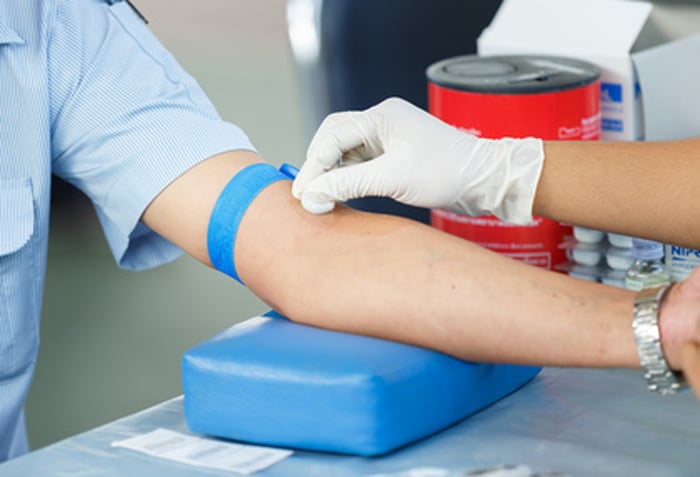Mastering Phlebotomy: Essential Tips for Using a Phlebotomy Training Arm Effectively
Phlebotomy is a crucial skill in the healthcare field,allowing professionals to draw blood for tests,transfusions,and donations. for aspirants and seasoned professionals alike, mastering the technique of venipuncture is essential. One of the best tools for honing this skill is the phlebotomy training arm. in this extensive guide, we’ll explore the effective use of a phlebotomy training arm, from benefits to practical tips, ensuring you gain confidence and precision in your technique.
Why Use a Phlebotomy Training Arm?
The phlebotomy training arm is a valuable educational tool designed to simulate the human arm, providing an ideal practice platform for novice learners and experienced practitioners. here are some key benefits:
- Realistic Experience: Mimics the human anatomy for effective skill submission.
- Safe Environment: Eliminates the risks associated with practicing on real patients.
- Immediate Feedback: Allows students to gauge their technique and improve rapidly.
- Durable and Cost-effective: Reduces the need for multiple practiced procedures on live patients.
Understanding phlebotomy Training Arms
Phlebotomy training arms come in various designs, each catering to different aspects of training. Here are the main types:
| Type of Phlebotomy Training Arm | Features |
|---|---|
| Basic Training Arm | Simple design for venipuncture practice; mimics skin and veins. |
| Advanced Training Arm | Includes features such as retractable veins and simulated blood flow. |
| realistic Models | More lifelike in structure, with additional anatomy for detailed training. |
Essential Tips for Effective Use of a Phlebotomy Training Arm
1.Familiarize Yourself with the Anatomy
Before starting practice, take the time to study the anatomy of the arm, including:
- Location of veins (e.g., median cubital vein, cephalic vein, basilic vein)
- Understanding near arteries, nerves, and how they relate to vein positioning
2. Practice Proper Hand Hygiene
Hand hygiene is non-negotiable in phlebotomy practice:
- Wash hands with soap and water or use alcohol-based sanitizer before and after practices.
- Utilize gloves to maintain a sterile field and reduce contamination risk.
3. Mastering the venipuncture Technique
Consistency is key in mastering venipuncture. Here’s how to ensure an effective technique:
- Select the appropriate vein by palpation.
- Apply a tourniquet effectively, ensuring it’s not too tight.
- Use a sharp needle and proper angle of insertion (15-30 degrees).
- Maintain control throughout the procedure, ensuring stability.
4. Utilize feedback for Enhancement
After each practice session, reflect on your performance:
- Ask instructors or peers for feedback on your technique.
- Record successful and unsuccessful attempts to identify areas for improvement.
5. Increase the Challenge Gradually
As you become more proficient, introduce variations:
- Practice on different types of training arms to experience varying levels of complexity.
- Modify the speed of procedures under timed conditions for better reflex development.
Case Studies: Learning from Others’ Experiences
Here are a couple of real-life experiences illustrating the effectiveness of using a phlebotomy training arm:
Case Study 1: Overcoming Fear of Needles
julia, a nursing student, struggled with the fear of needles. Practicing on a phlebotomy training arm enabled her to gain considerable confidence. With guidance, she honed her technique and transitioned to live patients with a newfound sense of control.
Case Study 2: From Beginner to Pro
Mark, an experienced phlebotomist, utilized the training arm as a refresher course. He focused on developing smoother movements and reducing insertion pain. Feedback from peers ensured he swiftly returned to top form, catering efficiently to patients.
First-Hand Experience: My Journey with Phlebotomy Training Arms
When I first started my phlebotomy training, the thought of drawing blood seemed daunting. However, the phlebotomy training arm became a game-changer in my journey. The initial awkwardness faded quickly as I became immersed in practice.
With consistent effort,I learned the specific anatomical landmarks and developed a gentle touch. The realistic feedback I received from my instructors enhanced my learning curve immensely. By the time I transitioned to practicing with patients, I felt prepared, confident, and skilled.
Conclusion
Mastering phlebotomy skills is an essential part of healthcare training, and using a phlebotomy training arm can significantly streamline this process. By understanding the anatomy, adopting best practices, and learning from others’ experiences, you can effectively enhance your technique and comfort level.
Whether you’re a student or a trained professional, the phlebotomy training arm is an invaluable resource to elevate your skills. Always remember,practice makes perfect,and with dedication,you will master the art of phlebotomy in no time!
